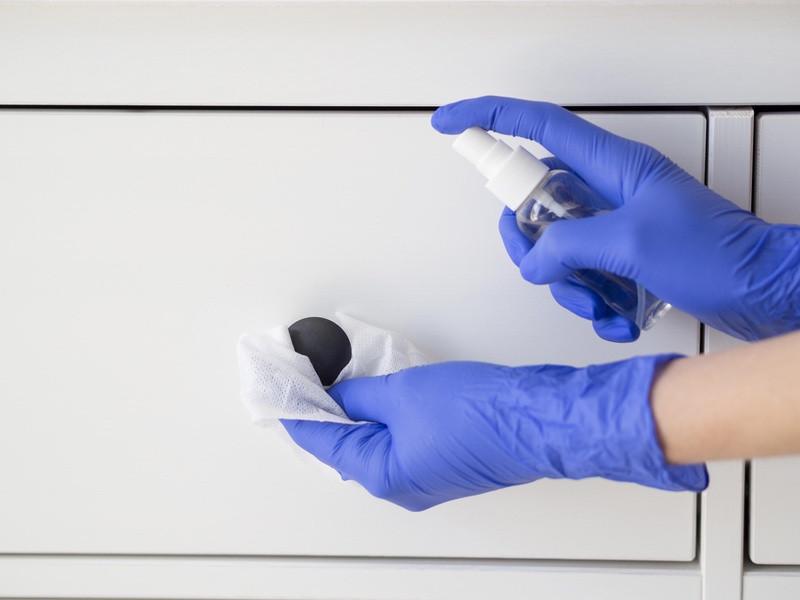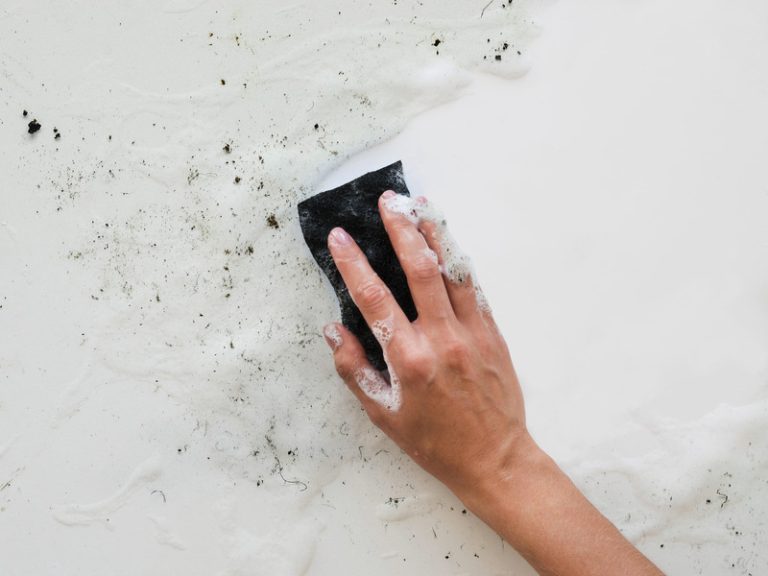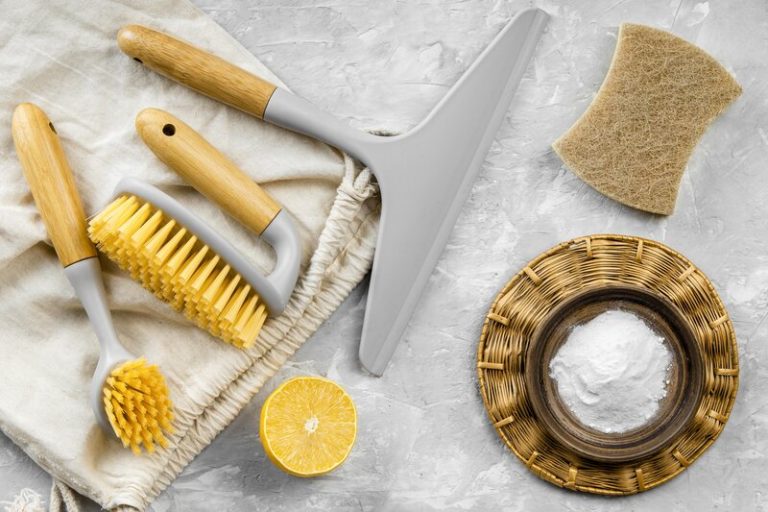If you’re curious about how to clean silicone sealant, you’re in the right place. This versatile material is essential for waterproofing and sealing in kitchens and bathrooms. However, it can accumulate dirt, grime, and mould over time, diminishing both its appearance and effectiveness. Regular inspection and cleaning are crucial to maintaining its integrity and keeping your spaces looking fresh.
In this article, we’ll cover the importance of cleaning silicone sealant and provide the necessary tools and materials. You’ll find step-by-step instructions for removing both fresh and stubborn sealant, as well as tips for sourcing the right products from your local DIY store. Learn how simple it is to restore and care for your silicone sealant to prevent water damage and enhance your home’s aesthetics!
Tools and Materials Needed to Clean Silicone Sealant?
To effectively clean silicone sealant, a variety of tools and materials are needed to remove dirt and residues without damaging the sealant itself. Essential tools include:
a. Razor Blade or Scraper
A razor blade or scraper is crucial for removing old, deteriorated silicone sealant before applying a new layer. Use a steady hand, angling the blade slightly to avoid damage beneath. Starting at a corner allows easier lifting of the sealant. Clean the area with a cloth as you work, and consider using masking tape to protect adjacent surfaces, ensuring a clean finish and optimal adhesion for new sealant.
b. White Vinegar
White vinegar is a natural cleaner effective against mould and mildew on silicone sealant. It contains acetic acid, which disrupts mould growth. To use it, mix equal parts vinegar and water in a spray bottle, apply it generously to the affected area, and let it sit for 30 minutes. For enhanced cleaning, consider using a sealant smoother tool to improve contact, then wipe clean and rinse thoroughly.
c. Baking Soda
Baking soda is a versatile cleaning agent known for its mild abrasiveness, perfect for tackling stubborn stains on silicone sealant without causing harm. To create a paste, mix baking soda with water and apply it to the stains. For added effectiveness, combine it with lemon juice or vinegar. Let it sit briefly, then scrub gently with a cloth or sponge until clean.
d. Rubbing Alcohol
Isopropyl alcohol is a powerful disinfectant that breaks down grime and bacteria on silicone sealant. Unlike bleach, it’s safer for the material and effectively combats mould. To use, apply it directly to affected areas, allowing it to disrupt mould spores. Always work in a well-ventilated space, wear gloves, and ensure the surface is alcohol-compatible for optimal cleaning.
e. Microfiber Cloth and Cleaning Cloth
Microfiber cloths are essential for cleaning silicone sealant, trapping dirt effectively while remaining gentle. These cloths can absorb excess moisture, reducing the risk of mould formation. Unlike traditional cloths, microfiber requires no harsh chemicals, as its structure easily breaks down dirt. Using microfiber ensures a tidy environment while simplifying your cleaning process and enhancing the longevity of your silicone sealant.
How to Clean Silicone Sealant and Bathroom Sealant?
Cleaning fresh silicone sealant is essential to ensure it adheres properly and functions effectively. Start by:
a. Remove Excess Sealant
Begin by carefully scraping away excess silicone sealant with a razor blade or scraper, using a gentle hand to avoid damaging adjacent surfaces. Wear protective gloves and goggles for safety, and consider using a putty knife or a specialist sealant remover for efficiency. Afterward, inspect for any remaining residue, and use white spirit on a cloth if necessary. Clean and dry the area thoroughly before applying new sealant to promote adhesion and durability.
b. Apply White Vinegar
After excess sealant removal, apply white vinegar to clean the area and eliminate residues. Soak a cloth or sponge in vinegar and wipe the surface, allowing it to sit for 10 to 15 minutes for better results. For enhanced cleaning, mix a few drops of mild dish soap with the vinegar. Rinse with warm water and ensure the surface is completely dry before sealing, setting the stage for a durable bond.
c. Scrub with Baking Soda
Once the vinegar treatment is done, scrub the area with a bicarbonate of soda paste to tackle any remaining stains or residues. Combine three parts baking soda with one part water to create a thick paste, applying it gently with a soft cloth. Let it sit for 5 to 10 minutes before rinsing. This method effectively cleans without harming the silicone sealant, ensuring a spotless finish while preserving its integrity.
d. Rinse with Water and Dry
Finally, rinse the area with water to remove any cleaning agents, then dry it thoroughly with a microfiber cloth. Proper rinsing is crucial to avoid any adverse reactions with the sealant, which could compromise its effectiveness. Ensure good air circulation to aid drying, checking corners and crevices for moisture. Following these steps helps maintain the sealant’s waterproof qualities, particularly in high-moisture areas like kitchens and bathrooms.
How to Clean Old and Stubborn Silicone Sealant?
Cleaning old and stubborn silicone sealant can be a challenging task that requires specific techniques and tools to effectively remove the degraded material without damaging surrounding surfaces, including:
a. Scrape Off Excess Sealant
To clean old and stubborn silicone sealant, start by carefully scraping off any excess material with a razor blade or scraper. Hold the blade at a low angle to avoid damaging the surfaces beneath. Using a fresh utility knife blade ensures a clean cut, while a plastic scraper can protect softer surfaces during the process.
After scraping, inspect the area for any remaining sealant pieces, as even small bits can affect new applications. Thoroughly clean the area with a suitable solvent, and let it dry completely before applying new sealant to ensure proper adhesion.
b. Apply Rubbing Alcohol
After scraping, apply isopropyl alcohol to help break down stubborn residues and disinfect the area. Allow the alcohol to sit for 5-10 minutes to penetrate and loosen the grime effectively. Then, use a clean cloth or scrubbing pad to gently scrub the area, lifting away any lingering dirt.
This method maximizes cleaning efficiency while keeping the surface intact. Always ventilate the space during this process and test on a small area first to avoid damage to surrounding materials.
c. Scrub with Baking Soda Paste
Following the alcohol application, create a bicarbonate of soda paste by mixing 120ml of baking soda with enough water to achieve a thick consistency. Apply this paste to the affected area, which can help scrub away tough stains left by the old silicone sealant.
Using a soft cloth or non-abrasive scrubber, gently work the paste into the residue. Rinse with warm water to remove both the paste and any loosened silicone. This gentle method ensures you clean effectively without scratching delicate surfaces.
d. Rinse with Water and Dry
Conclude the cleaning process by rinsing the area thoroughly with water to remove any remaining cleaning solution. After rinsing, dry the area with a microfiber cloth to prevent moisture accumulation that could lead to mould growth.
Make sure to check corners and hard-to-reach spots for trapped moisture and allow the area to air dry completely. By following these steps, you can maintain a clean environment and minimize future issues related to stubborn silicone sealant.
What Are the Tips for Maintaining Clean Silicone Sealant?
Maintaining the cleanliness of silicone sealants is essential to prolong their life and effectiveness, which can be done by:
a. Wipe Regularly
To maintain clean silicone sealant, regularly wipe it down with a damp cloth to prevent grime and mould buildup. This simple practice not only promotes longevity but also ensures your spaces remain hygienic and visually appealing. Aim to clean the silicone sealant at least once a week, using mild soap mixed with warm water for routine cleaning.
For tougher stains, natural alternatives like vinegar or bicarbonate of soda are effective and gentle. Always test new cleaning products in a small area first. By following these steps on how to clean silicone sealant, you can save time and reduce repair costs over the long term.
b. Use Mild Cleaners
When cleaning silicone sealant, opt for mild, non-abrasive cleaners that won’t damage the sealant. Effective options include warm soapy water, white vinegar, or a baking soda paste. These cleaners remove dirt while preserving the sealant’s integrity.
To apply, dampen the area, then gently scrub with a soft cloth or sponge in a circular motion. Rinse thoroughly to eliminate any residue. Using these gentle methods is key to maintaining the appearance and functionality of your silicone sealant.
c. Avoid Harsh Scrubbing Tools
To keep silicone sealant effective, avoid harsh scrubbing tools that may scrape or damage its surface. Using the wrong cleaning method can compromise the sealant’s durability, potentially leading to leaks and costly repairs. Instead, choose gentler cleaning tools to preserve the sealant’s lifespan.
Safe alternatives include soft microfiber cloths and non-abrasive sponges. Eco-friendly cleaning solutions are also a great choice, as they protect both the sealant and the environment. By prioritizing these gentle methods, you can ensure the silicone sealant remains intact and functional.
In exploring how to clean silicone sealant, we’ve highlighted the importance of regular maintenance to preserve its appearance and effectiveness. By following the right techniques and using suitable tools, you can easily keep your silicone sealant looking fresh and prevent mould growth.
However, if you’re short on time or prefer a professional touch, consider utilising the residential cleaning services from TEKA Cleaning. Our expert team is trained to handle even the toughest cleaning challenges, ensuring a thorough deep clean that leaves your home spotless and hygienic. With our attention to detail and commitment to quality, you can trust us to take care of your cleaning needs while you focus on what truly matters.
Don’t let dirty silicone sealant diminish the beauty of your home! Call TEKA Cleaning at 01223 751 544 today to book your cleaning service. Experience the convenience and peace of mind that comes with professional cleaning, and let us help you maintain a fresh and inviting living space!
Read also:











